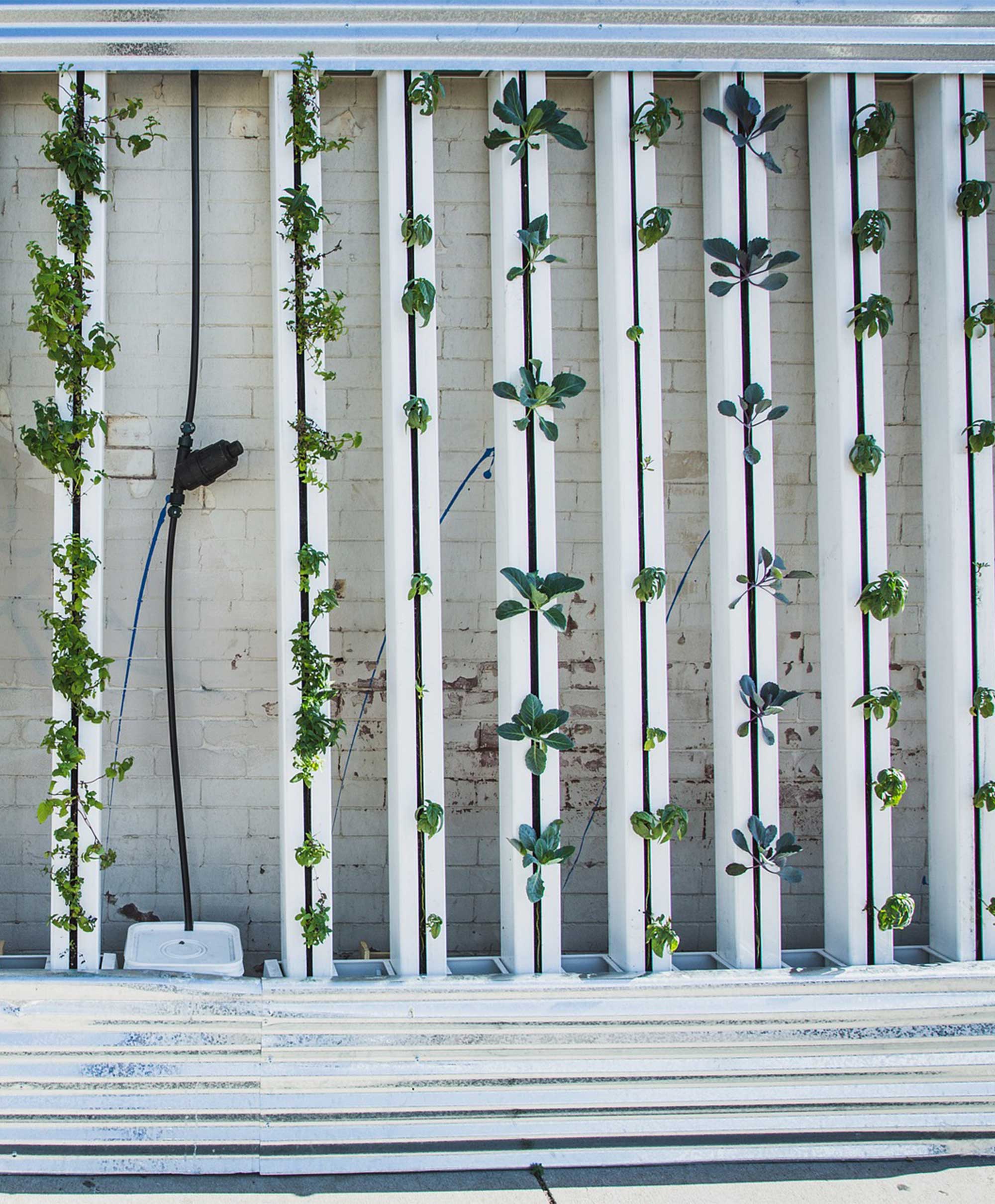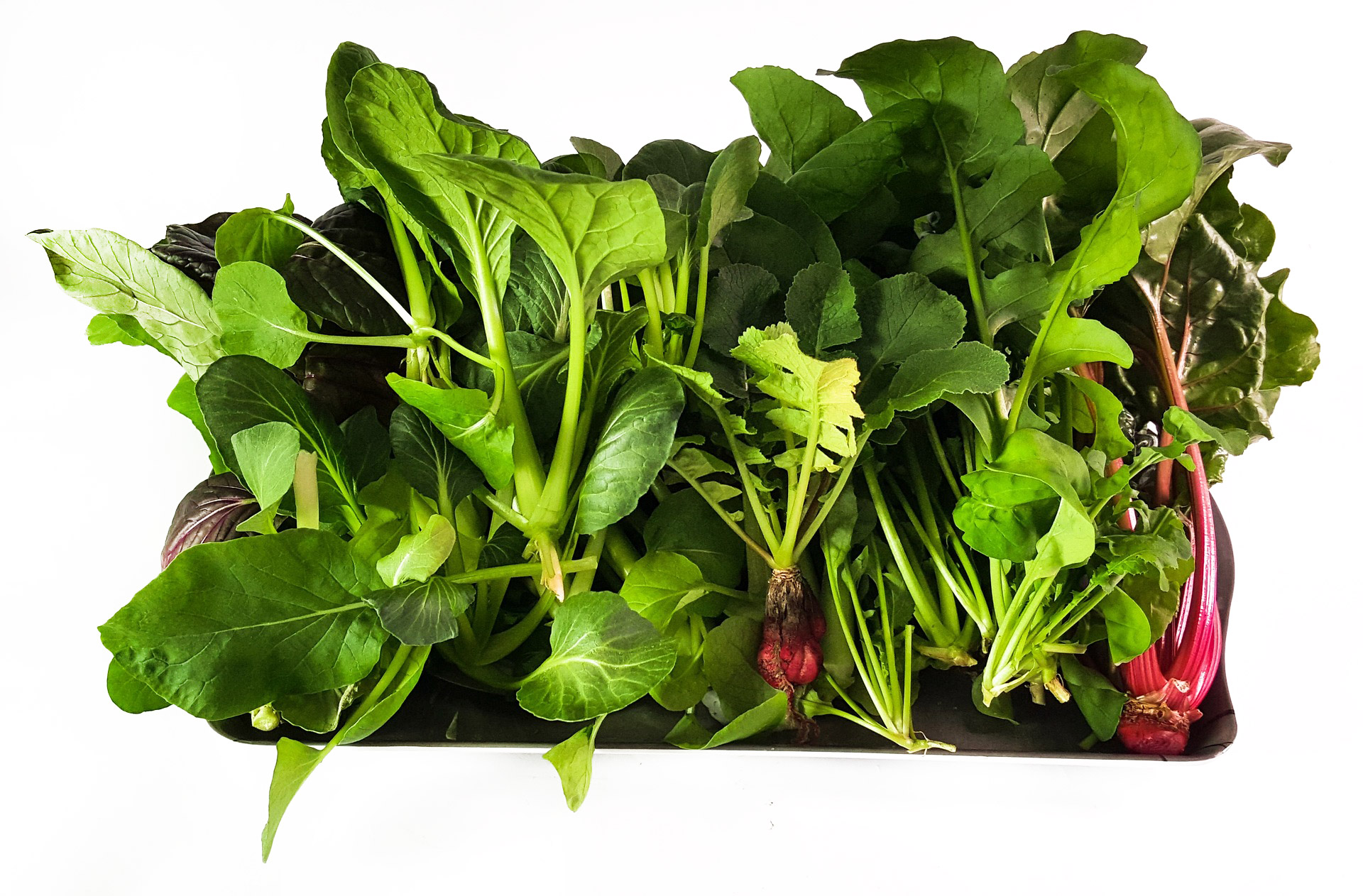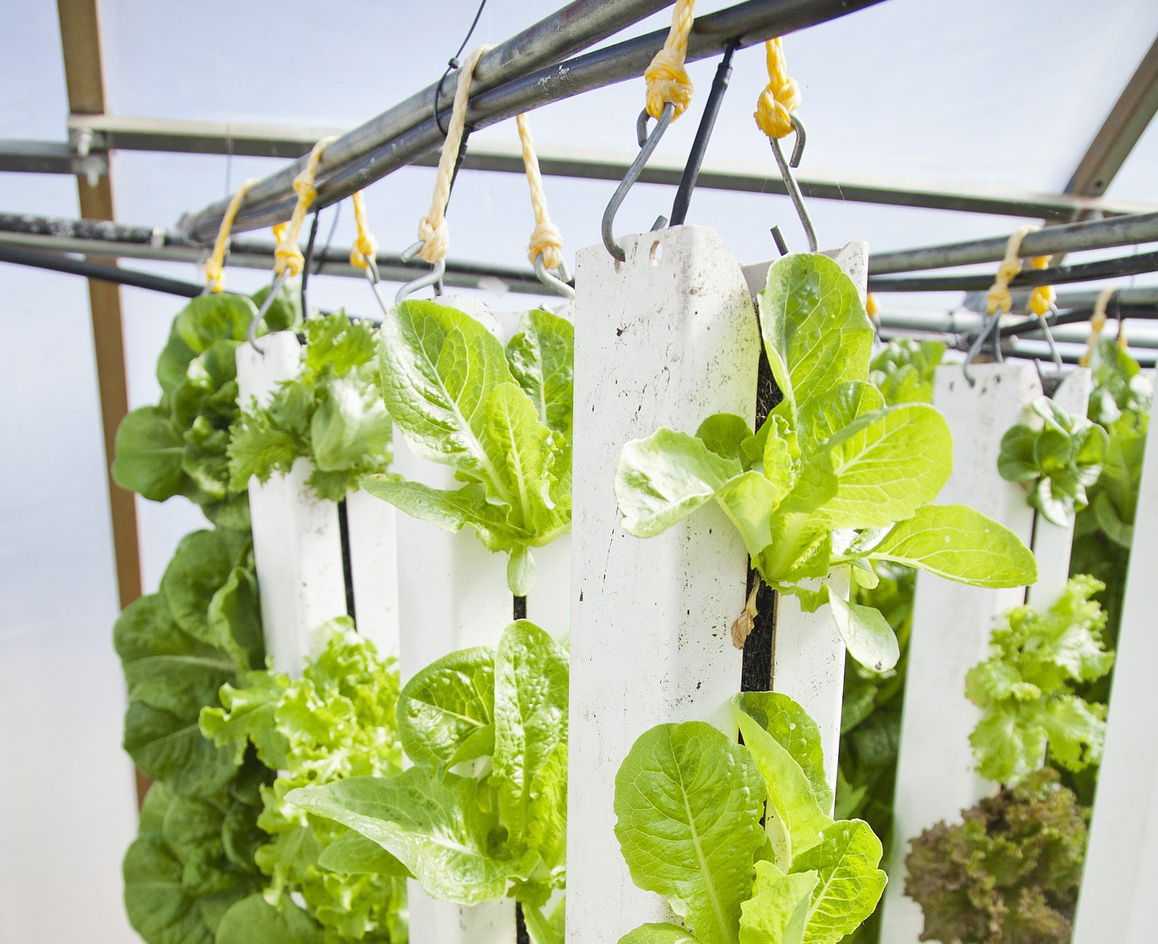
Basil from the vertical box
A guest post by Miriam
I go to the supermarket and in the middle of the vegetable and fruit department there is a box with a pink light. Herbs and salads grow in it. I have the choice: Either basil from the shelf, wrapped in plastic wrap, as I know it, or a basil from this flickering box. "Let's be crazy", I think and take it with me - the sci-fi basil from the pink light!
That's how I came across a company that produces food using vertical farming. But what is it really? In addition to super foods, urban gardening and vertical farming, it is easy to lose track of things. They just sneak into my life and I have no idea where that stuff comes from. Almost like from another planet and somehow that's a bit true, because the sci-fi basil could grow anywhere.


So that you don't find yourself standing perplexed in front of a pink box the next time you go shopping, you can read here what vertical farming is and what the advantages and disadvantages are.
Vertical farming - what is it anyway?
Vertical farming has been more and more present for a few years now and could soon be found in a supermarket near you. This is not surprising, because this type of food production could be an answer to the problems and questions of our time.
Vertical farming means first of all that cultivation takes place on several levels, one on top of the other, i.e. vertically. It is built upwards instead of horizontally, as in traditional agriculture. Vertical farming takes place on houses or within a building. With “indoor” vertical farming, cultivation is independent of the local climatic conditions. As a rule, various methods of plant cultivation are used that do not require soil and work with artificial LED light and therefore manage without sunlight.
Why should plants be grown outside of their natural habitat?
The majority of people now live in urban areas, and the number is growing. Agricultural products have long transport routes and high costs behind them before they reach their destination. Moving food production closer to the metropolitan areas and thus significantly reducing environmentally harmful transport therefore seems sensible. For this reason, most vertical farms are located in or in the immediate vicinity of large cities. In addition, this technology enables cultivation in regions with poor climatic conditions.
In addition, over nine billion people are expected to be living and needing food in the world by 2050. That means 2050 percent more food will be needed by 70. To this end, agricultural production must be increased by using and conserving water, fertile soils and biodiversity more effectively. With vertical farming, plants can be produced year-round and regardless of the season. The elimination of long haulage also means that there are fewer harvest losses along the supply chain.
Furthermore, the environment suffers greatly from commercial agriculture. As a result of the intensive land use, the fertility of the soil decreases. In addition, a lot of nitrogenous fertilizers are used in agriculture, which are harmful to the environment. The part of the fertilizer that is not absorbed by the plants is carried away through groundwater, surface water or the air. This can have negative effects on the quality of the groundwater and affect biodiversity. The climate is also negatively affected in the form of nitrous oxide, which is produced as a result of over-fertilization. Since vertical farming takes place “indoors” and the plants absorb their nutrients and water via a cycle, the excess is collected and can be reused. In this way, the environment is not polluted by excess fertilizer and intensive land use. Furthermore, up to 90 percent of water can be saved and, due to the self-contained system, no pesticides or pesticides are used.
Why Plants Shouldn't Be Grown in High Tech Farms:
Of course, there are also voices on this topic who speak out against such plant breeding. I don't want to withhold them from you.
A major disadvantage is the high energy consumption that occurs on such a farm. Both the operation and the construction of the farm require and consume large amounts of energy. In commercial agriculture, however, there is light for free. In addition, so far the food has been made available by several companies. If, on the other hand, the food supply of a city were to be ensured by a few vertical farms, this would create a large, essential dependency. Power outages or illness could lead to major yield losses and affect the food supply of entire cities.
Another question that arises in vertical farming is the supposed cleanliness of the system in which the plants grow. In general, the high hygiene standards in our society are often seen as the reason for the increasing number of autoimmune diseases and allergies. The supposedly clean plants that grow in a vertical farming system could therefore be harmful to our immune system in the long term, as they do not challenge our immune system and it is not promoted in the long term.
How does this affect the food?
Since indoor vertical farming is a closed system, no pesticides are required, which we therefore do not absorb. In addition, the long transport routes are eliminated and the vegetables arrive fresher at the consumer. The taste can also be varied with different lighting options. Furthermore, the high-tech farms make it possible to grow herbs, fruits and vegetables in our latitudes that would normally not grow here and are therefore not available or lose their taste due to the long transport.
On the other hand, the question to what extent these “clean” plants have a negative effect on our immune system has not yet been clarified. While this does not have a direct effect on the taste, it should be considered in the long term.
Conclusion
I'm back in the supermarket and the glowing box from the vegetable department laughs at me again. This time I know! About the advantages, but also the disadvantages. I pack the sci-fi basil because the benefits have won me over. But I will still keep an eye on developments. How will the clean vegetables affect me and my health in the long term? I would have liked to have answered this question before everything comes out of this luminous box. Also to what extent vegetables from a vertical farm are more environmentally friendly than vegetables from the field. It certainly depends on how far away the field is. Whether the field is in Chile or only 50 kilometers away.
Despite everything, it is certainly reassuring to know that there are alternatives to conventional cultivation methods if these are no longer sufficient!
Now it's your turn…
If you want to read more, then read here the whole article By miriam. She explains with clear pictures on the Bloghow vertical farming actually works. At the end there is a small list of links with providers and modules with which you can set up your own small farm.








COMMENT